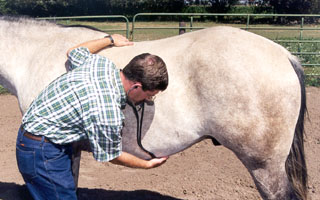
| Listening to gut sounds in the cecum. |
Note:
Divide each side of the horse into two sections or quadrants. Some sort of gut sound should be heard in each quadrant every minute. Normal gut sounds that are routinely heard include gurgling, sloshing, and even a dripping faucet sound. It should be considered abnormal to hear continuous noise (hypermotile) or hear no sounds at all (hypomotile).

|
|
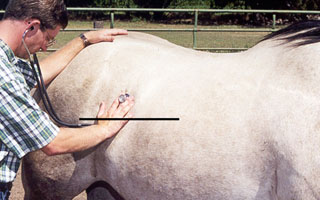
|
|
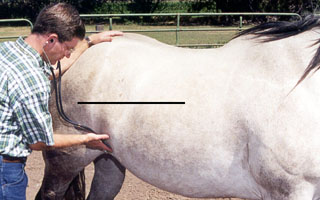
|
|
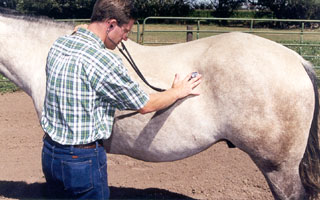
|
|
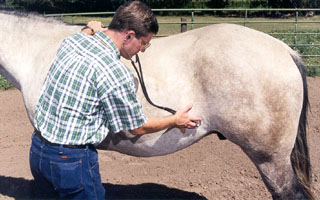
|
|
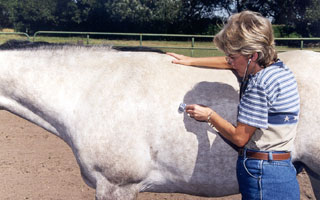
|
Lungs
|
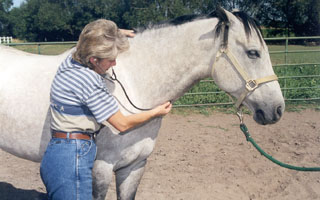
|
Trachea
|

|
Lungs
|